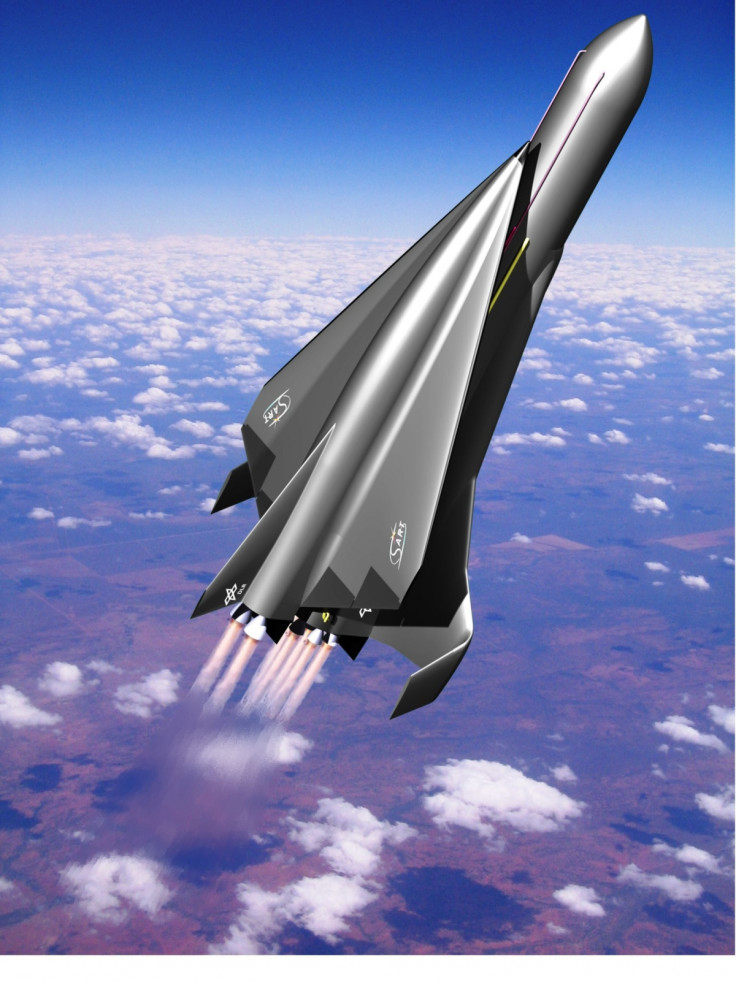SpaceLiner: How the German hypersonic rocket jet that travels Australia to Europe in 90 minutes works
Germany's space agency is currently working on a hypersonic jet powered by rocket technology that will be able to carry passengers from Europe to Australia in just 90 minutes, at 25 times the speed of sound.
The SpaceLiner is an ultra-fast form of transport that makes use of existing space rocket technology so as to avoid the many technical problems that make hypersonic aircraft currently impossible. On top of this, the scientists at the DLR Institute of Space Systems in Bremen are also working on technologies to make the jet 100% eco-friendly and reusable, which is currently not possible in space rockets.
The SpaceLiner has been conceptualised since 2005 and after a decade of research, the DLR scientists are now moving into the next phase of their project, and believe that the aircraft will fly by 2045.
How the SpaceLiner works

The vehicle consists of two stages – a booster stage consisting of nine rocket engines and fuel tanks, and the actual passenger aircraft, which contains a cabin that is able to hold 50 passengers and two crew members, as well as two rocket engines and fuel tanks.
To take off, all 11 rocket engines fire to launch the SpaceLiner vertically into the air like a conventional space rocket. Then, about four minutes into the flight, the booster stage separates from the passenger stage.
Using a new technology known as "in-air capturing", the booster stage is then picked up in mid-air by a specially-designed plane, which tows the booster back to the launch site, where the booster uses its wings to perform an autonomous landing.
Meanwhile, the passenger stage uses its two engines to accelerate slightly beyond Mach 25, travelling at speeds of up to 7.3km per second, or rather 26,280km per hour, and it will be able to carry six tonnes of weight.
When taking off in a conventional airplane, passengers often feel a very slight amount of gravity, which is usually only 1.2G during take-off and landing.
At the moment, hypersonic aircraft is not considered to be safe for passengers, but DLR says that passengers on the SpaceLiner will only feel a maximum g-force of 2.5G. To give you a comparison, the gravity you feel from sitting on a roller coaster hurtling downwards is 8-9G.
The passenger stage cabin also functions as a rescue capsule and will have a solid propulsion system with little engines of its own that activate in case of emergency.
Who will ride on this jet?
The SpaceLiner will cost €30bn (£22bn, $33bn) to develop and is targeted at First Class and Business Class passengers, but the scientists believe that there is demand for ultra-fast transport, in the same way that aircraft manufacturers now see a future in supersonic aircraft.
"If you put it into context, the Concorde was about €9bn, and the Airbus A380 cost about €14bn, so we think that in 30 years, this will be a feasible price to pay," Olga Trivailo, a research scientist with the German Aerospace Centre at the DLR Institute of Space Systems told IBTimes UK.
"But it's not just for passengers. In terms of cargo, this would be relevant for the transportation of human organs for transplants and other short-longevity goods."
However, although the ticket prices will initially be quite pricey, the scientists' goal is to make space more accessible by developing technologies in the SpaceLiner that could one day allow it to travel into lower-Earth orbit to launch satellites, carrying a payload of 20 tonnes of weight.
Advanced, green technologies

The technologies will hopefully also make space travel and air travel cheaper and more environmentally friendly, as the SpaceLiner is completely powered by a propellant made from liquid oxygen and liquid hydrogen, so the only emission is water vapour.
By carrying water on the jet, the liquid can also be used as an active-cooling system to cool the leading edges of the nose, wings and the fin of the passenger stage, as hypersonic aircraft suffer from friction in the air and high heat loads caused by the extreme compression of hypersonic flow since the aircraft is going so fast.
"We're currently in the technical development stage but we know that the market for this exists. At the moment, everyone else is focused on hybrid engines or rocket technology, but this is classical rocket technology that has been around for a long time," said Trivailo.
"Having been in the pipeline for the last 10 years, this is the most advanced concept of its time. At the moment, it's a closed loop whereby production of spacecraft is very low and it's very expensive, and so there is low demand. We want to break that cycle and make high quantities of production possible."
DLR is looking to partner with other research institutions and commercial partners. A smaller model of the passenger stage will be tested at the DLR Arc-heaters Facility in Cologne, and the scientists are also looking into having passenger chairs that swivel and are able to absorb gravity forces.
© Copyright IBTimes 2025. All rights reserved.






















